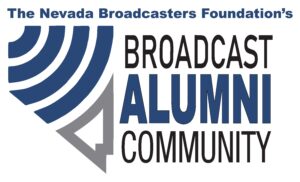During most months, FCC procedures, rules and regulations, with their mostly predictable schedules and deadlines, give broadcasters a feeling of routine. In this time of stay-at-home orders, social distancing measures, and face-mask wearing, even FCC deadlines cannot provide the semblance of normality we are all looking for. In fact, May is one of those months where there are no regularly scheduled regulatory filings (e.g., no renewals, EEO reports, fee filings, or scheduled public file disclosures). Nevertheless, as always, there are a number of important regulatory dates—and changes in some dates—for May of which broadcasters should be aware.
The radio license renewal process continues its march across the country, and the renewal cycle for television begins with the required filing by June 1 of license renewals by full-power TV, Class A TV, TV translator, and LPTV stations in DC, Maryland, Virginia, and West Virginia. Those stations should be working on their renewals in May, looking to file them on or before the June 1 deadline. See our article here on the FCC’s recent announcement of the procedures for filing TV renewal applications.
June 1 is also the deadline for license renewals by full-power AM and FM stations and LPFM and FM translators in Michigan and Ohio. While the FCC on April 9 issued an Order waiving the requirement that radio and TV stations with June 1 filing deadlines air pre-filing announcements in May to relieve their administrative and compliance burdens when airing more coverage and public service announcements about the COVID-19 pandemic, the renewal filing deadlines remain in place. Stations are still required to air post-filing announcements. Thus, radio operators in Kentucky, Indiana and Tennessee who filed their renewals on or before April 1 need to run their post-filing announcements on May 1 and May 16.
Other routine business of the FCC also marches on. The FCC’s May Open Meeting is scheduled for May 13, with two items on the agenda that will interest broadcasters. The first is a media modernization item that proposes to modernize and simplify the written and on-air public notices broadcasters must provide upon the filing of certain applications (see our post from 2019 about this issue here). The second is a draft Report and Order and Notice of Proposed Rulemaking related to the assessment of 2020 regulatory fees. In the draft Report and Order, the Commission rejects proposals by VHF TV licensees to lower population-based regulatory fees to account for signal limitations and degradation (we wrote about this issue here and here). In the draft NPRM, the Commission seeks comment on its proposal to assess 2020 fees for full-power TV stations based on the population covered by the station’s contour and proposes applying a factor of .78 of one cent ($.007837) [per person served] for 2020 fees. TV stations can find their proposed fee in Appendix G. With the FCC building effectively shut down, Chairman Pai, the commissioners, and staff will again conduct the meeting by teleconference. If recent history is a guide, items are likely to be voted on circulation ahead of the meeting, with the Chairman and Commissioners making short remarks during the teleconference meeting.
The FCC in late February released a Public Notice seeking public comment on the State of Competition in the Communications marketplace, which we wrote about here. The FCC will use public comments it receives to craft the report that it must submit to Congress every even-numbered year. That report is then used to inform the FCC’s and Congress’s views on the communications marketplace when writing legislation and rules and regulations, including rules on broadcast ownership (see our article here). Due to the coronavirus outbreak, those dates have been pushed back to April 27 and May 28, so if you are interested in informing Congress and the FCC about the state of the marketplace for radio and TV (and other industries regulated by the FCC), you can still file reply comments in this proceeding before the May 28 deadline.
The FCC is also accepting comments on a petition for rulemaking that asks the Commission to look at changing the rules around FM zonecasting. We wrote in more detail about this issue here. In short, the petition seeks a rule change that would allow FM boosters, currently required to pass through 100% of a primary station’s programming, to instead transmit short pieces of more localized content, like news and weather reports and advertising applicable to the booster’s coverage area. Initial comments on the petition for rulemaking are due by May 4. These are but initial comments to advise the FCC as to whether there is sufficient interest to pursue this matter further. If there is, then the FCC would still need to formulate proposed rules for the service and offer those rules up for public comment in a subsequent Notice of Proposed Rulemaking. So this is an idea unlikely to become reality for at least another year, even if there is general support in the record.
Dates have been set for comments and reply comments on the FCC’s Notice of Proposed Rulemaking on Significant Viewing. The NPRM looks at updating the methodology for determining whether a station is “significantly viewed” in a community outside of its local market, and thus may be treated as a local station in that community for certain broadcast carriage purposes. You can read the NPRM here and we wrote here about some of the specific questions asked in the Notice. Comments and reply comments are due May 14 and June 15, respectively.
The business and regulation of broadcasting continues so, as always, stay tuned to the blog for updates and watch the FCC’s website for announcements and date changes, and always consult your own attorney for other dates and deadlines that might affect your operations.
Courtesy Broadcast Law Blog


